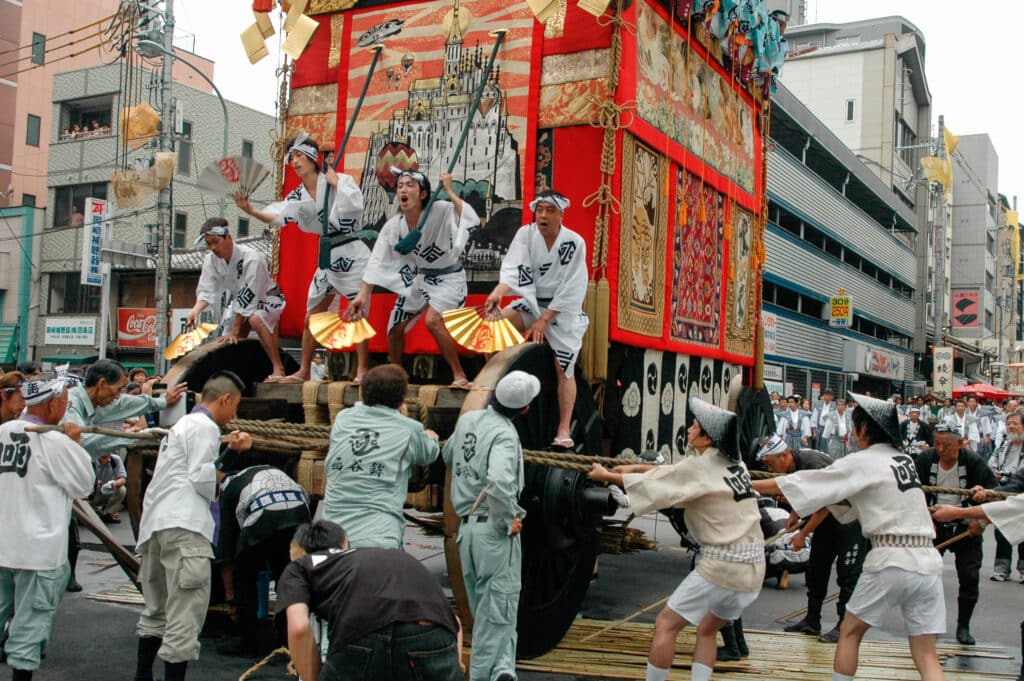
Are you planning to attend Gion Matsuri 2024? This blog helps you prepare for this epic experience. Part 1 of this blog is helpful too.
With Gion Matsuri 2024, the festival has taken place more than a thousand times since its origin in the year 869. Surely this is an outstanding case study for sustainability, of tremendous interest in these times of an uncertain future. My decades of fieldwork at Gion Matsuri inspire me to want it to help it to continue for another millennium.
It’s awesome to think that you will be one of the millions of people who have participated in the festival throughout its long history. That makes you part of a tremendous community across space and time. Cool, right?
The history of the festival is so long, and it’s culture so vast, that it can be difficult to understand what we are looking at, or participating in. It’s definitely more enjoyable, however, if it feels like a meaningful experience. How can we do that with however much time we have available?
What’s Your Travel Philosophy?
This begs some larger questions: Why do we travel? How do we travel?
We benefit from asking ourselves these questions. Perhaps a few times, a little more deeply. Awareness brings wisdom.
We might travel somewhere because it looks exciting or interesting. But why take extra trouble and spend considerable resources to journey there and make our way around?
I travel to learn. But what’s different from learning in the comfort of my own home?
When I inquire more deeply, I feel that travel teaches me to be a better human. I feel humbled by the many strangers worldwide who have shown me kindness and hospitality for no apparent reason other than to be kind and hospitable. It inspires me to try to be a person who would extend the same generosity to strangers.
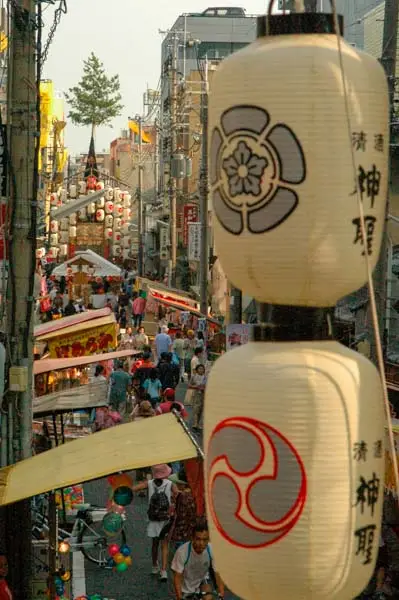
The Only Constant is Change
Heraclitus said that. I’d say I travel for transformation. Why do you?
Fortunately for me, the Gion Matsuri’s original purpose was transformation. It was more dramatic than my personal scenario. Plague was devastating Kyoto, and people believed this was caused by negative spirits.
In response, the imperial court held rituals to try to transform these negative spirits into positive ones that would help people instead of harm them. Since these rituals are still taking place more than a thousand years later, does this mean they work?
Is there anything in your life that you’d like to transform? Bringing this possibility with you to Gion Matsuri 2024 could make for a more meaningful experience.
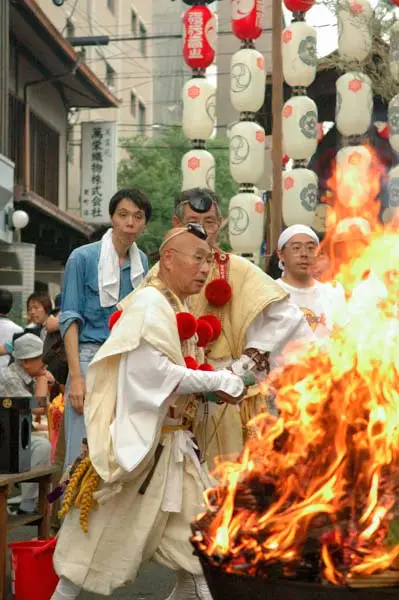
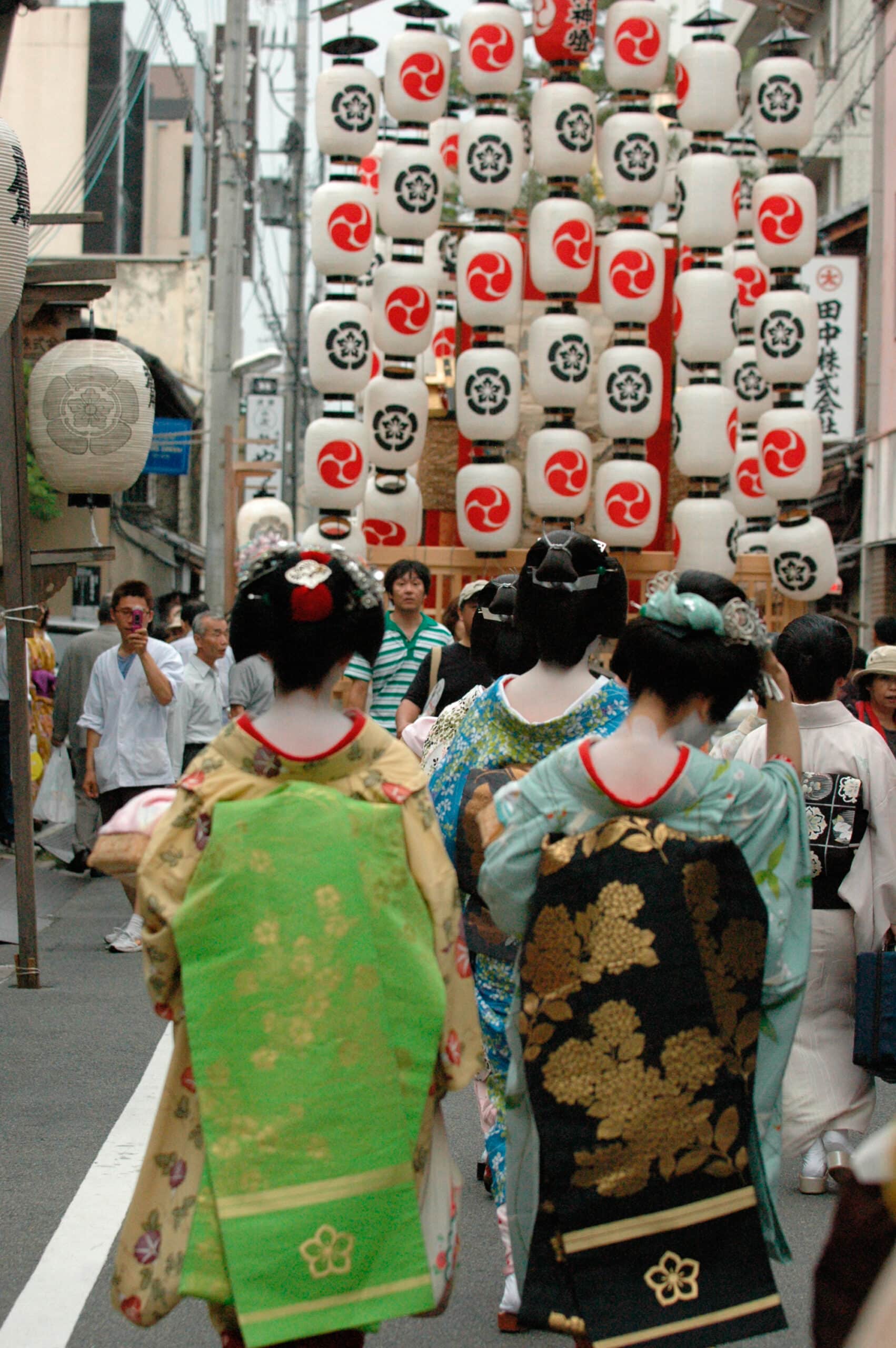
Kyoto’s geiko-san also have a longstanding connection with the Gion Matsuri.
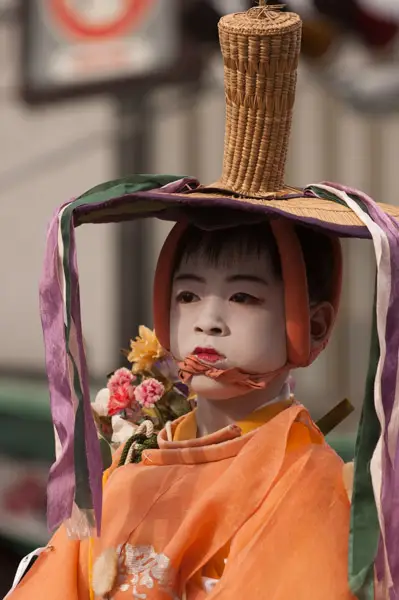
One of Yasaka Shrine’s two Kuze komagata chigo-san in the Mukai Chochin procession on July 10.
Self-Care at Gion Matsuri 2024
A sense of meaning will help you cope with the heat: it’s a kind of modern ascetic practice.
Whether you believe in climate change or not, higher temperatures have been making the Gion Matsuri more physically taxing over the last decade or so.
Though the festival’s roots are in July’s rainy season, blistering sun has been edging out rain more frequently, with the occasional exception of torrential downpours and flooding.
So you’ll be glad to be prepared for strong sun, heavy rain, and wet feet.
In addition, follow these simple guidelines to make the most of your Gion Festival discoveries:
- Stay hydrated.
- Take regular breaks.
- Listen to your body, and give it what it needs
- Traditional Japanese food is healthy and remarkably good value in Kyoto.
- Green tea was originally prized as medicine; it’s good for everything (and contains caffeine).
- All these will ensure you stay healthy, inevitably leading to a more wonderful time.
- And remember to keep the address of your accommodation with you, in both Japanese and English, in case you need assistance finding your way back.
Designed for Local Devotees
Be advised that the Gion Festival was never designed for visitors. Navigating the crowds and small spaces, in particular, can be confounding.
The Gion Matsuri was designed for local parishioners of the historic Yasaka Shrine, and for pilgrims to the shrine and festival. Historically, a Japanese person from another part of the country might dream their whole lives of visiting the Gion Festival in person one day.
Still now, people visit Yasaka Shrine and the Still now, people visit Yasaka Shrine and the yamaboko floats to pay respect to the many Gion Matsuri deities who shower their blessings on Kyoto during the festival.
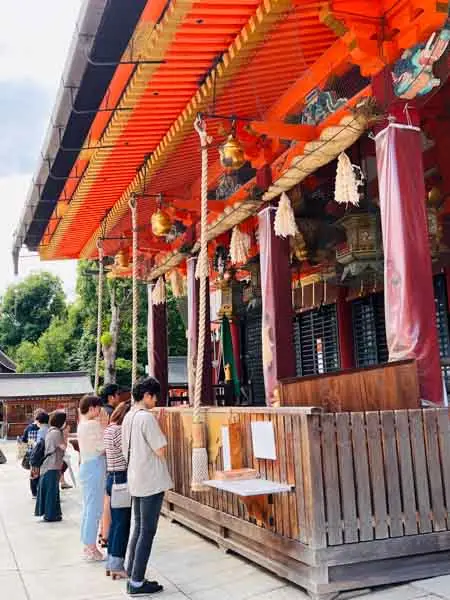
Dwelling In A Sacred Space
So consider treating your visit to the Gion Festival as though you were traveling the Camiño of Santiago de Compostela, visiting Varanasi in India, or on a trek in the Himalayas. Being inside the Gion Matsuri means being inside a sacred space.
What does that mean for you? Taking that as a reflection or meditation could lead to some profound insights at Gion Matsuri 2024. Remember, this is a gigantic collection of purification rituals.
Despite the Japanese love of form, Japanese spirituality is relaxed and open. Its beliefs are not prescriptive, and Japanese people feel it’s not necessary to “believe in” Shinto or Buddhism to participate.
Right: All straw and paper like this has been ritually blessed, and indicate a sacred space. Shrine at Ayagasa Boko.
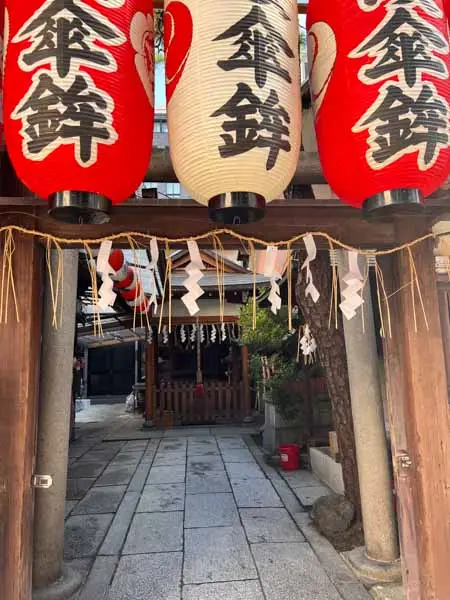
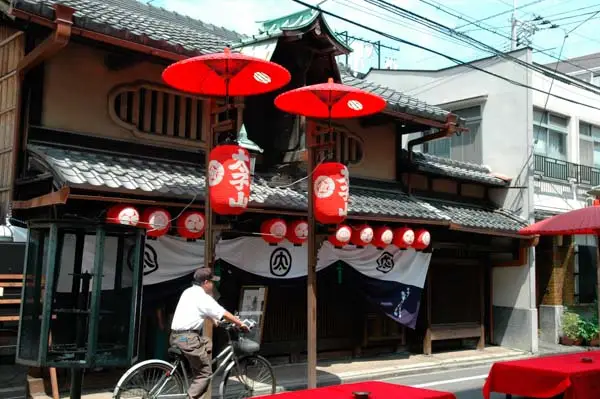
Traditions Change Too
Please be aware that events and schedules can change without notice. In particular, the extreme heat of recent years has led to changes in events that include mostly women and children. In 2023 the route of the Hanagasa Junko procession on July 24 was new (and shorter): from near the Takatsuji Muromachi intersection north to Shijo Street, and straight east to Yasaka Shrine.
I went to watch it along its traditional route, and nothing was there! So this does happen, even to longtime Gion Matsuri hands like me. Rolling with it is the best option.
As of the time of writing, the route for 2024 has not been determined. I’ll share this year’s route in a future blog before July 2024.
You can also sign up for my mailing list below, in the footer. This means you’ll get between one and five emails a year (an annual update and notification of presentations). Joining the list also gives you access to the interactive Gion Matsuri maps I’ve created on Google, including a map for the Hanagasa Junko.
Learn more about making the most of your Visit to the Gion Matsuri in the Visit page and Part 1 of this blog.
Here’s wishing you a very meaningful, transformative experience at Gion Matsuri 2024!
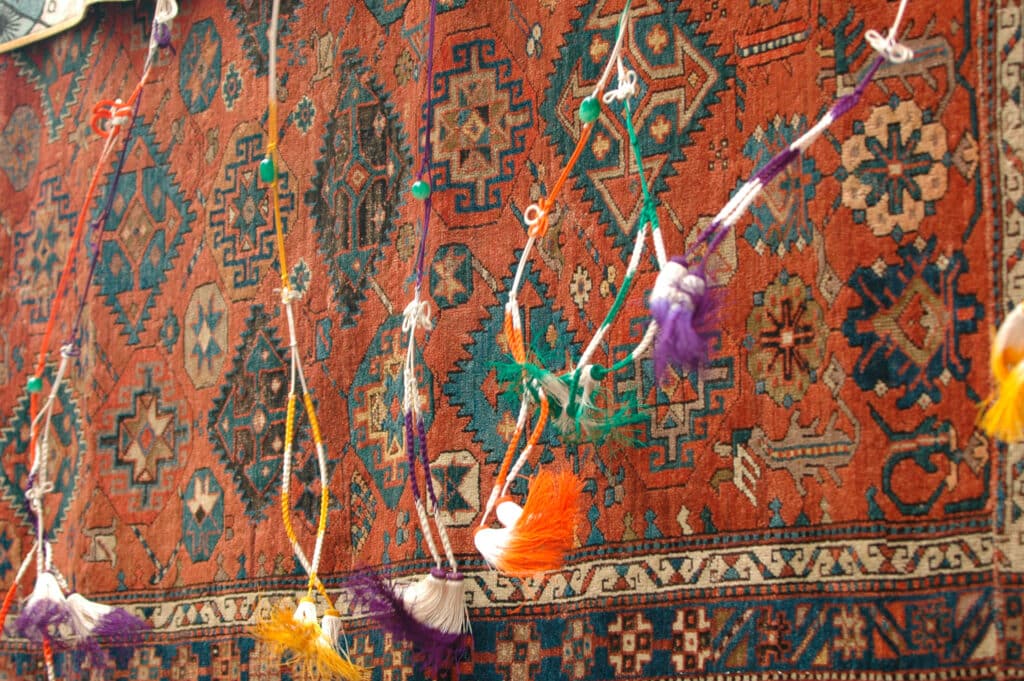
Keen to Explore More Deeply?
Enjoy the free resources on this site as my gift to you. And know that my book, The Gion Festival: Exploring Its Mysteries, is even better. It’s full of helpful context, history, information on each float, fascinating facts, tips for your visit, maps, and schedules. You can buy it or download a gift chapter here.
Interested in sharing this content? Check out the Creative Commons Attribution-NonCommercial-ShareAlike 4.0 International License for guidelines on how. These guidelines provide an easy way to grow a culture of generosity, in line with the philosophy of sacred commerce.